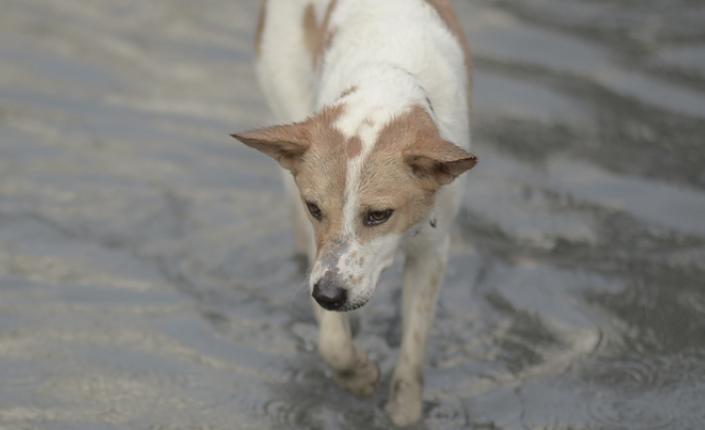
Are You Ready to Weather the Storm With Your Pet?
Are your pets part of your emergency plan? Don’t wait until disaster strikes to put a strategy in place! In light of the recent natural disasters that have been in the news, we think it’s a good time to revisit your emergency evacuation plan or start a new one from scratch. Not only should you have an emergency kit for you and your family, you should also have one in place for the family pets. A kit and plan is essential should you be stuck in your home during a disaster or ready to move in a moment’s notice. So, if you’re ready to weather the storm alongside your dog or cat, read on for our recommendations for emergency planning.
Before You Go
There’s plenty you can do to prepare for a disaster before it actually happens. At the very least, make sure that your pet’s ID tags and microchip are up to date and that their pet carrier is labelled with updated contact information.
To prepare for a possible evacuation, you might consider investing in a harness, booster seat, or pet seatbelt so your pet can ride safely in your car. Remember, the safest place for your pet to be restrained is the back seat. Smaller animals that will be evacuated in a carrier or crate should become familiar with their mode of transport before the need for evacuation arises. Consider a test drive by taking your pet for a car ride in their carrier or crate to get them used to the routine.
The thought of being separated from your pet during an emergency can be terrifying. Although you may not want to think about it, it really is best to prepare for the worst. You can start today by putting together a missing pet handout that contains all of your furry friend’s identification information (microchip number, descriptive features, current photo of you and your pet, etc.). These flyers can be easily distributed and help get the word out. It may sound unnecessary, but in the event of an emergency when your emotions are heightened you’ll be glad you planned ahead!
Taking Shelter
Unfortunately, the majority of emergency evacuation shelters do not allow pets. If you have friends or family that live outside of the evacuation area, you can ask if Fido can crash with them for a few days.
However, not everyone has that option. That’s why it’s best to plan ahead and know your options before a disaster strikes. Start by calling your local animal shelter or veterinary clinic to get advice on where you can take your pet. You can also look into the possibility of staying in a pet-friendly hotel along your evacuation route.
Emergency Kits
Now that you know where you’re headed, it’s time to prepare an emergency kit for your pets. Here are a few ideas to get you started:
- Food & Water – Make sure you bring enough pet food and water with you to last at least two weeks. Store everything in airtight, waterproof containers. Evacuations can cause huge traffic jams and hours stuck on the road. Best to have plenty of food on hand in case you’re unable to get to a grocery or pet store. Don’t forget a can opener!
- Bathroom Supplies – Pack your cat’s litter box and plenty of litter. For dogs, plastic bags will do. It doesn’t hurt to have some paper towels, cleaning products as well as garbage bags for waste disposal on hand in case you need to clean up any bathroom-related accidents.
- First Aid Kit – Just like an unexpected disaster, accidents can happen out of the blue as well. Having your pet friendly first-aid kit ready, and on hand, will allow you to provide urgent care, treat wounds and/or tend to injuries. Check out our DIY pet first aid kit tutorial here: https://www.youtube.com/watch?v=zA_13qIh06E
- Medications – If your pet takes medication on a regular basis, don’t forget to pack a two-week supply along with pharmacy contact information, vaccination certifications, and other medical records.
- Comforts of Home – Toys, treats, and blankets can help reduce anxiety in a stressful situation. Make sure you have an extra collar & leash handy for extra security!
- Handouts – Have several copies of your missing pet flyer with up-to-date contact information on hand just in case you need it (email, phone numbers, etc…).
- List of Possible Routes & Accommodations – Make sure you map out possible evacuation routes in case you are limited for options to go in certain directions. Research your options for pet-friendly hotels on these routes and keep a list with their contact information in your kit for easy reference.
No one likes thinking of emergencies, but preparation is key in keeping your family members and your pets safe. Even if you don’t anticipate needing to evacuate, or being trapped with your pets, many of these tips are still useful to keep in mind when travelling with your pets. Print and keep a copy of our emergency checklist on hand so you’re prepared the next time you and your pets hit the open road!
